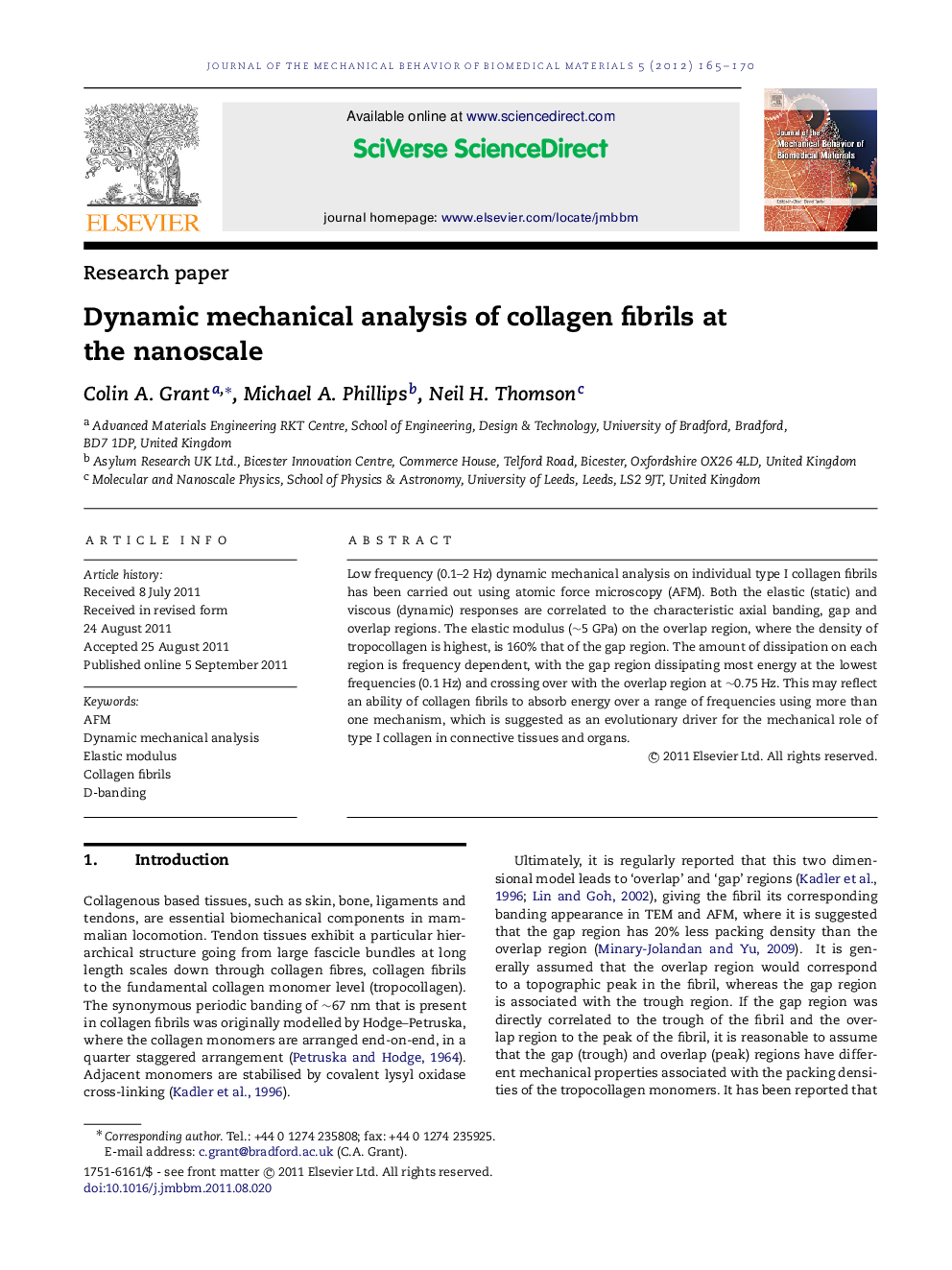| Article ID | Journal | Published Year | Pages | File Type |
|---|---|---|---|---|
| 811193 | Journal of the Mechanical Behavior of Biomedical Materials | 2012 | 6 Pages |
Low frequency (0.1–2 Hz) dynamic mechanical analysis on individual type I collagen fibrils has been carried out using atomic force microscopy (AFM). Both the elastic (static) and viscous (dynamic) responses are correlated to the characteristic axial banding, gap and overlap regions. The elastic modulus (∼5 GPa) on the overlap region, where the density of tropocollagen is highest, is 160% that of the gap region. The amount of dissipation on each region is frequency dependent, with the gap region dissipating most energy at the lowest frequencies (0.1 Hz) and crossing over with the overlap region at ∼0.75 Hz. This may reflect an ability of collagen fibrils to absorb energy over a range of frequencies using more than one mechanism, which is suggested as an evolutionary driver for the mechanical role of type I collagen in connective tissues and organs.
Graphical abstractFigure optionsDownload full-size imageDownload high-quality image (392 K)Download as PowerPoint slideHighlights► High resolution force mapping on individual collagen fibrils. ► Discrete difference in the modulus correlated with periodic banding. ► Dynamic indentation testing at physiologically relevant frequencies (0.1 to 2 Hz). ► Amount of dissipation on the gap/overlap regions is frequency dependent.
